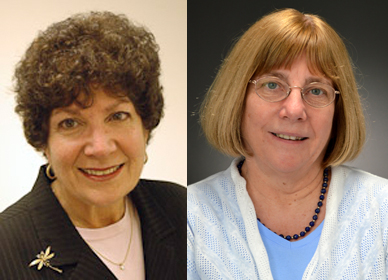University of Vermont Cancer Center members Jane Lian, Ph.D., and Janet Stein, Ph.D., have been elected Fellows of the American Association for the Advancement of Science (AAAS) in recognition of their contributions to innovation, education, and scientific leadership. The announcement of the AAAS 2016 Fellows was featured in the November 25, 2016 issue of Science.

Jane Lian, Ph.D., professor of biochemistry, and Janet Stein, Ph.D., professor of biochemistry (Photo: LCOM Creative Services)
University of Vermont Cancer Center members Jane Lian, Ph.D., and Janet Stein, Ph.D., have been elected Fellows of the American Association for the Advancement of Science (AAAS) in recognition of their contributions to innovation, education, and scientific leadership. The announcement of the AAAS 2016 Fellows was featured in the
November 25, 2016 issue of Science.
The two UVM Larner College of Medicine professors of biochemistry were named Fellows in the Section on Biological Sciences. They were presented with an official certificate and a gold-and-blue (representing science and engineering, respectively) rosette pin at the AAAS Fellows Forum with nearly 400 2016 AAAS Fellows at the AAAS Annual Meeting held in Boston February 16-20 2017.
The tradition of AAAS Fellows began in 1874. Currently, members can be considered for the rank of Fellow if nominated by the steering groups of the Association’s 24 sections, or by any three Fellows who are current AAAS members (so long as two of the three sponsors are not affiliated with the nominee’s institution), or by the AAAS chief executive officer. Fellows must have been continuous members of AAAS for four years by the end of the calendar year in which they are elected.
Both Stein and Lian joined the UVM faculty in 2011. Stein’s research focuses on the regulation of gene expression during the cell cycle and during the proliferation/differentiation transition. Lian’s research involves several areas, including combinatorial control mechanisms for skeletal development; characterization of mouse phenotypes resulting from mutation of bone related genes; and cancer cell biology in the bone microenvironment.